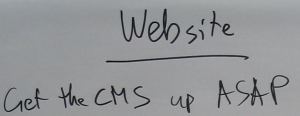So, When Canon introduced the EOS350D, they obsoleted the EOS300D and ran it out at stupidly low prices… well, that’s the justification I used when I bought one last week.
Anyways, I knew when I bought it the 300 runs USB 1.1 rather than 2, and I can live with how astonishing slow it is to transfer pictures.
And the rapid shot buffer is only 4 shots, but I knew that.
And writing to the flash card is slow. Shooting at high resolutions and taking a rapid collection of photos do not go hand in hand. I didn’t know that, but the camera is quite a step up from where I was, so I can live with that.
And the RAW format! Nothing seems to understand it, not even Photoshop. Why have a lossless format if nothing can read it? Just store the things as TIFFs, for the love of God!
But the freak-out thing is the level of OS support for digital cameras. In XP, just plug in random USB memory stick and it works. Plug in a camera, XP says “hey look! A camera! Got a driver?”; if you say “no”, XP says “oh well, forget the camera then. It certainly can’t be anything like all those memory sticks. You’d be wanting to plug that super expensive SLR camera in so you can use it as a web cam, and I need drivers for that. You certainly wouldn’t want to be ripping the images off it to free up the flash card.” XP then proceeds to become unstable, requiring cold boots to get better again.
XP is such crap. So I loaded the drivers, and all the shitty Canon image manipulation software (excluding Photostich; that’s amazing, purely amazing).
On another note, why doesn’t my camera have a built-in MP3 player? How hard would that be? All that lovely flash memory and great thunking battery going to waste…
Oh. Final tip: to claim the GST back on “duty free” (modern equivalent) purchases over $1000, you need a tax invoice with your details on it. Or more precisely, the traveller’s details. Can be a trap for young players.

 When you’re away on a weekend for a workshop, at a location off the beaten track with no provided technology other than 240 volts… and your IT resources are limited to what you bring yourself — a couple of laptops — and your group spends 48 hours scribbling notes all over butcher’s paper…
When you’re away on a weekend for a workshop, at a location off the beaten track with no provided technology other than 240 volts… and your IT resources are limited to what you bring yourself — a couple of laptops — and your group spends 48 hours scribbling notes all over butcher’s paper…